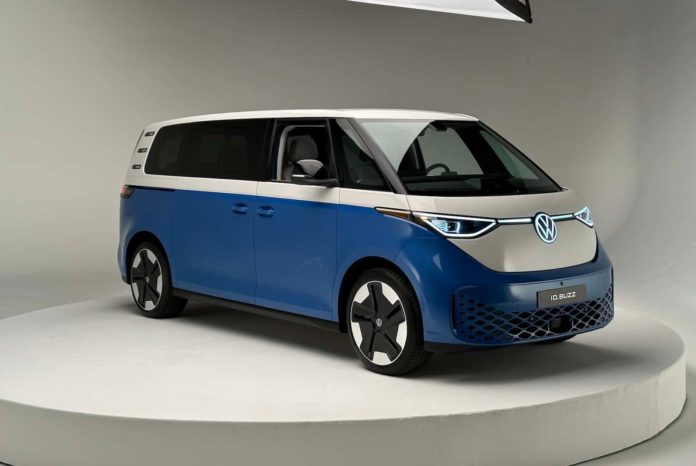The buzz is back. The Volkswagen ID.Buzz, that is. It’s the closest the German automaker has come to reviving the long gone, but fondly remembered VW Microbus.
Don’t call it a “minivan” for fear of the automaker’s wrath. People mover seems to be a more acceptable description. But whatever you choose, the ID.Buzz is set to become the most important product launch of the coming year for Volkswagen, according to Pablo Di Si, VW’s U.S. chief executive.
“I think we’re going to be overwhelmed next year with orders,” Di Si suggested during a media roundtable ahead of the all-electric model’s launch in suburban Los Angeles on Friday.
To be more precise, it’s the U.S. model that Volkswagen is unveiling in Southern California, the spiritual home of the original VW Microbus.
Stretched and updated for the American market
The ID.Buzz has already been on sale in Europe for a year now. But often faulted for failing to acknowledge the distinct taste and needs of American motorists, the German automaker decided to delay the U.S. launch until early in 2024.
It takes only a quick glance to spot the most significant changes. The version coming across the Atlantic grows about 10 inches longer, providing enough room for a third row of seats. If anything, the stretched version actually looks a bit more like the original van — known to truly dedicated fans as the T2 — that made its debut back in 1950.
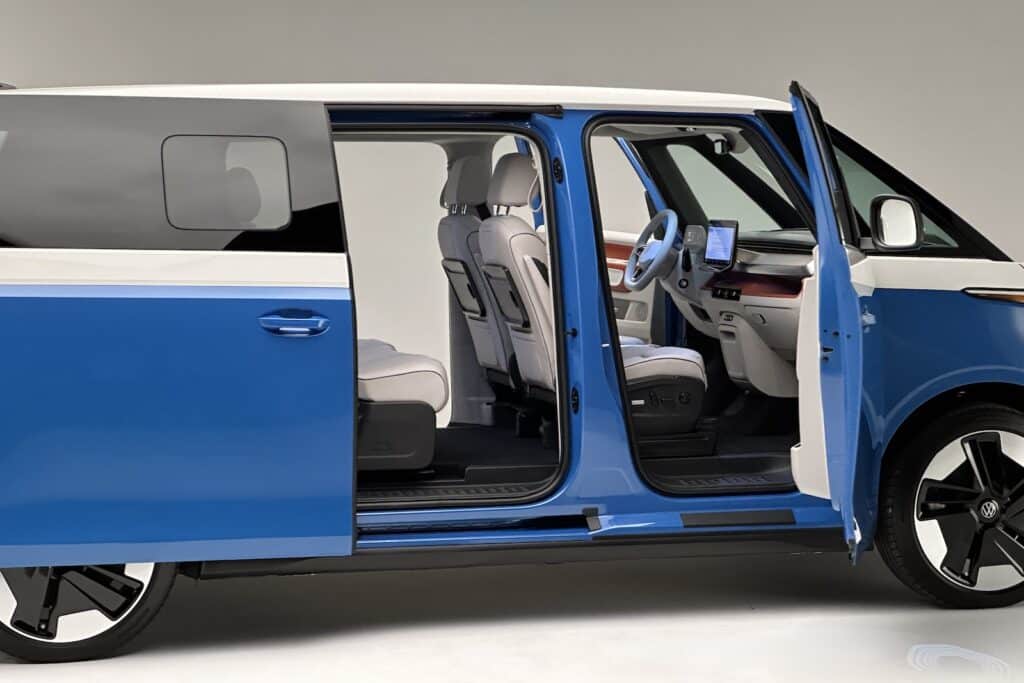
There are the soft curves to the body, as well as the short overhangs. While there is an unmistakably nostalgic element to the new model, it isn’t a retro-mobile.
An icon for the “digital era”
“We very consciously ensured that we were not making another (Microbus),” Jozef Kaban, the design chief who oversaw the project, explained last year. The goal was “transferring the genes and stylistic elements of that iconic vehicle into the digital era.”
There’s a single piece of glass, rather than the Microbus’s split windshield. And ID.Buzz clearly spent a lot of development time in the wind tunnel, designers seeking to minimize drag in order to maximize range.
What casual observers might not notice is the fact that the ID.Buzz foregoes the original van’s — er, people mover’s — rear-mounted, air-cooled internal combustion engine. ID.Buzz goes all-electric, joining Volkswagen’s fast-growing line-up of battery-electric vehicles. The lithium-ion battery pack and drivetrain system are mounted below the load floor.
A cavernous cabin
That frees up even more room than in the original Microbus or — among more modern products — Volkswagen’s Atlas SUV which comes in at 5 inches longer than the ID.Buzz.
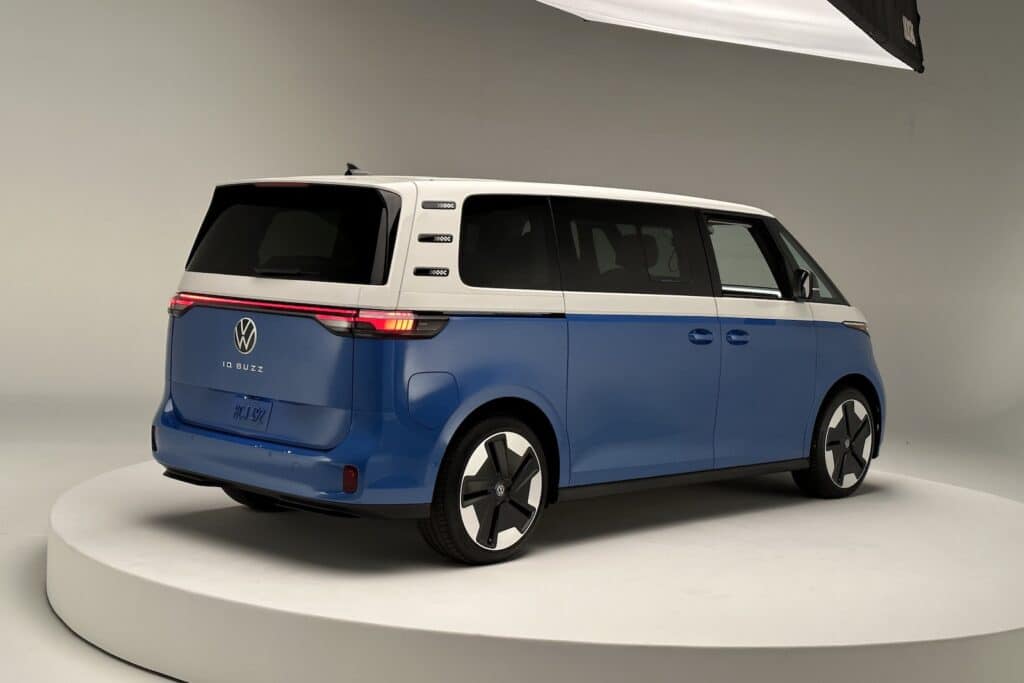
Buzz can seat up to seven passengers, six if a buyer opts for second-row captain’s chairs. There’s plenty of leg and headroom for adult passengers in all three rows. There’s also a surprising amount of cargo space, especially with the back rows folded down for a flat load floor — though the automaker has yet to release final figures. There’s a fold-down platform capable of carrying two adults in the cargo compartment. Beneath it are two soft, removable bins and a fold-away storage compartment meant to keep grocery bags from spilling.
The interior design has a lot in common with the other members of the Volkswagen ID family of EVs. Like the original ID.4, the digital gauge cluster is mounted atop the steering wheel. There’s a new, 12.9-inch landscape-oriented infotainment screen, meanwhile. And, in response to complaints about that original model, VW has added standalone controls for the climate system.
No base model
As has become fashionable in the EV world, VW opted for leatherette, rather than leather, on Buzz’s seats. But those up front are heated and ventilated, with power and memory, even a massage function.
“There’s no base model” to Buzz, said Di Si, noting that a single, well-equipped trim package will be offered. There will be some options, such as the 14-speaker Harman Kardon audio system and a huge, 67.4-by-40.8 inch electrochromic sunroof which can instantly go from clear to opaque and back with a tap of a button.
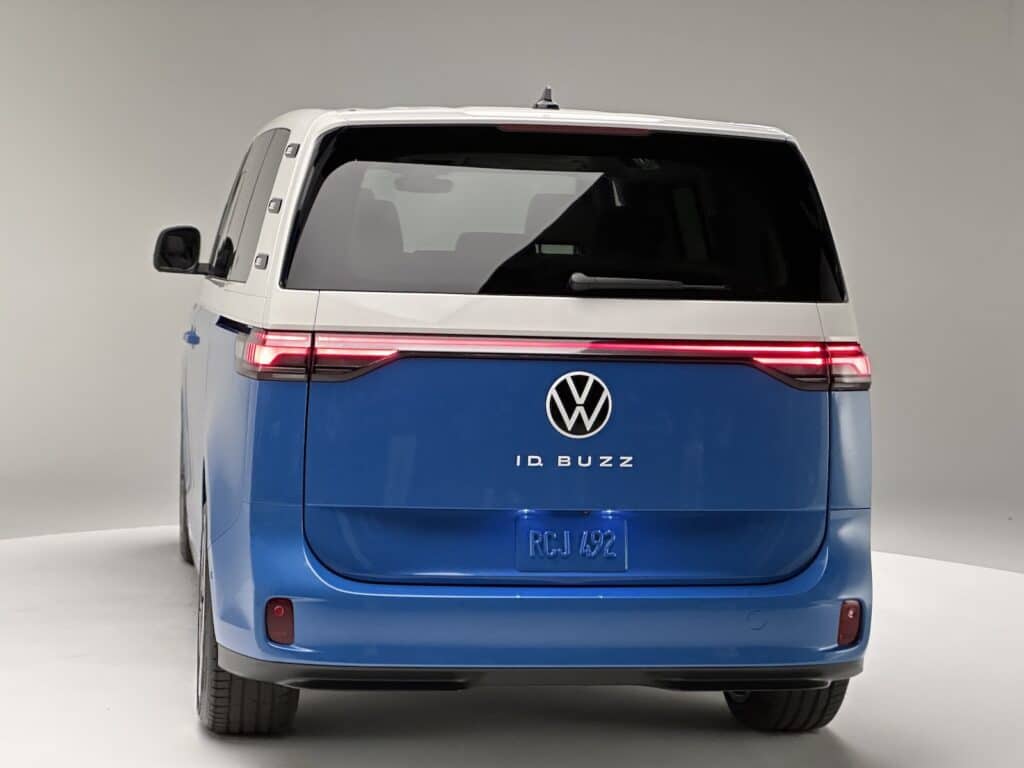
As has also become the norm for the latest EVs, the ID.Buzz is loaded up with technology, including a broad array of advanced driver assistance systems. (Among the handful options is a self-park feature.)
Getting it right
Asked why it will wind up taking nearly two extra years to launch the U.S. version of the ID.4 following the 2022 debut of the European two-row model, Di Si pointed to the people mover’s infotainment system. It is faster and offers more functions, he said.
Infotainment technology has become the single biggest source of owners’ quality complaints, according to J.D. Power, and it is worth taking the extra time to make sure the ID.Buzz technology works as promised.
ID.Buzz also will be capable of using smartphone-style over-the-air updates which will allow VW to both fix faulty software and eventually add new features remotely.
Drivetrain specs
Of course, the most important technology on any EV is the drivetrain. And that’s another big upgrade from the European package. The battery pack holds 91 kilowatt-hours of energy, or nine more than the EU model. And the rear-wheel-drive American model makes 282 horsepower, 81 more than in Europe, and 406 pound-feet of torque. An all-wheel-drive model also will be offered, bumping the pony count up to 330. The torque number hasn’t been released for the AWD model.
The American ID.Buzz is electronically limited to 99 mph, where the top speed for the two-row European package is set to 90.
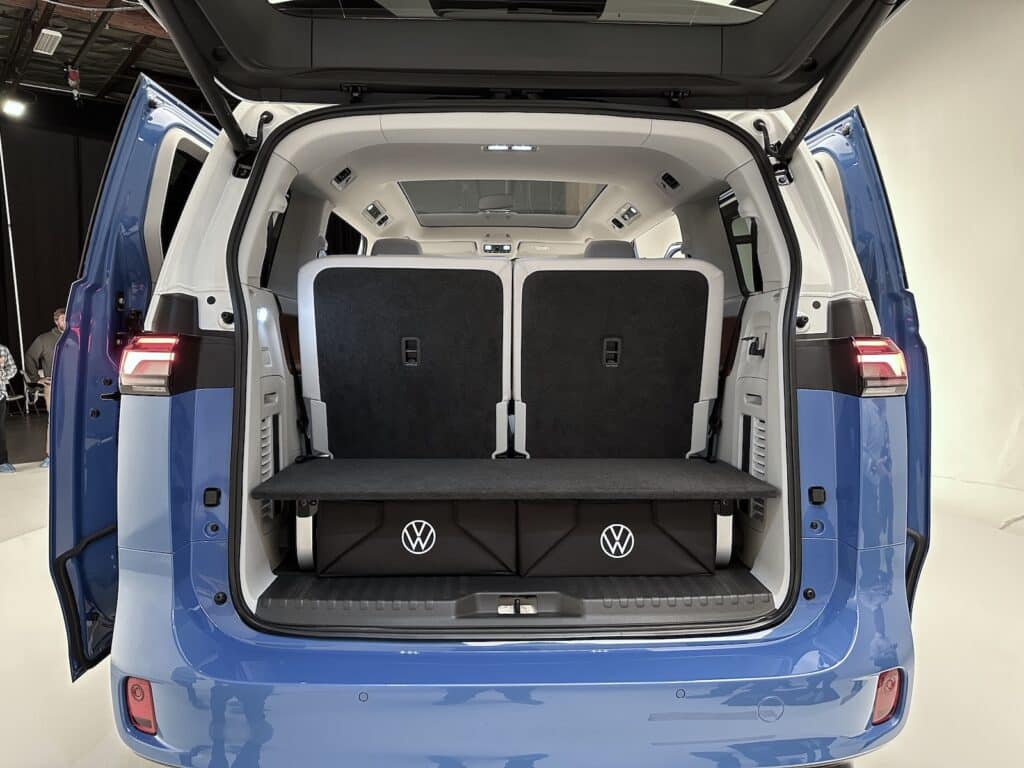
Using the more strict EPA test cycle, VW expects the RWD ID.Buzz will deliver 260 miles per charge, the AWD model 252. Final numbers will be released before the on-sale date.
VW has yet to release charging information for the three-row Buzz. The 82 kWh European pack can go from a 10% to 80% state-of-charge in as little as 30 minutes, VW claims, using a public quick charger. It requires just over 11 hours reaching 100% with a Level 2 240-volt home charger.
Pricing and availability
In Germany, the two-row Volkswagen ID.Buzz starts around $68,000. The automaker has yet to release numbers for the U.S. Some industry observers have forecast a starting price as low as $40,000 but, with Di Si stressing that there will be no stripped-down “base” model, the figure could run substantially higher, some estimates now pushing above $50,000.
Figures could be released later this year, when the automaker expects to begin taking advance orders for the three-row model. Di Si said he foresees few, if any, of the vans will be kept in dealer stock. He expects most, and likely all, will be ordered ahead of time.
One of the potential problems he hopes to head off is having VW dealers pile on surcharges — something that became commonplace during the semiconductor shortages. During the last several years, American motorists have often found themselves having to pay thousands over MSRP for popular models.
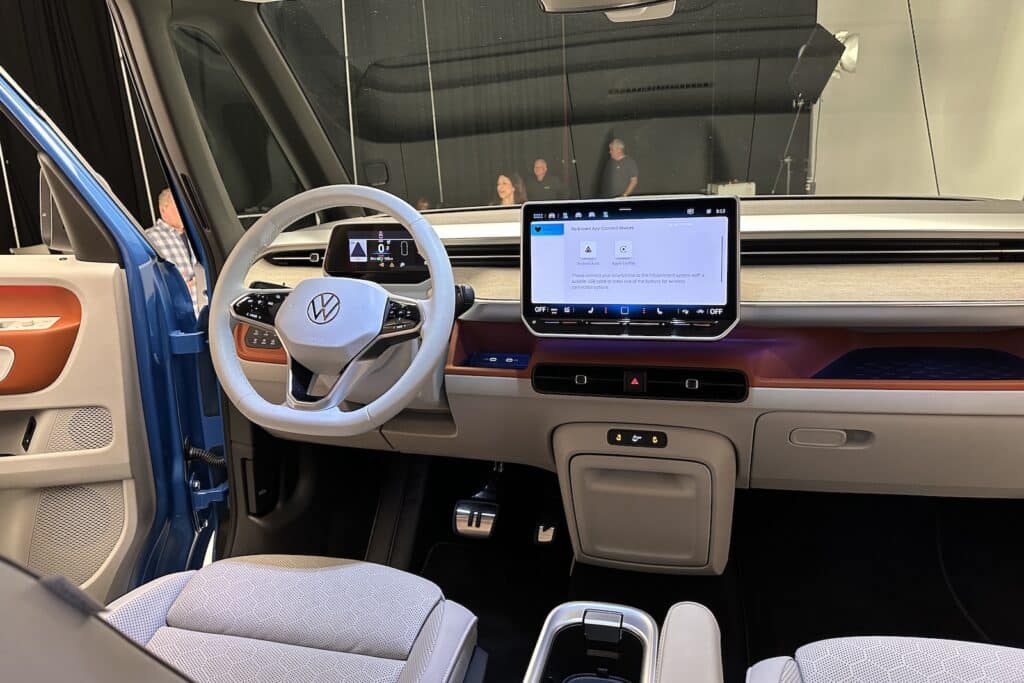
“I’m not comfortable charging $10,000 more for the first customers,” he said, adding that he will be working with dealers to convince them to hold to MSRP on the ID.Buzz.
Limited supply
For now, at least, VW plans to build the ID.Buzz at just one plant, in Hanover, Germany. It does not expect to add production in the U.S. — though that strategy could change if demand continues to exceed supply, as the automaker expects to happen initially. The plant can produce just 100,000 of the vans annually.
As an import, the ID.Buzz won’t qualify for the $7,500 in incentives under the Inflation Reduction Act. Or, more precisely, it won’t qualify for those who purchase the EV outright. A loophole in the IRA will let buyers collect the tax credits if they lease. But, noted Di Si, rising interest rates have made leasing far less cost effective than in the past.
Over the long haul, the automaker expects to lift a page from the original Microbus handbook. “We’re working to keep momentum going,” said Di Si. “I think special versions are the right way to go.”
So, don’t be surprised to see versions of the ID.Buzz aimed at campers, surfers and other niches in the years ahead.

